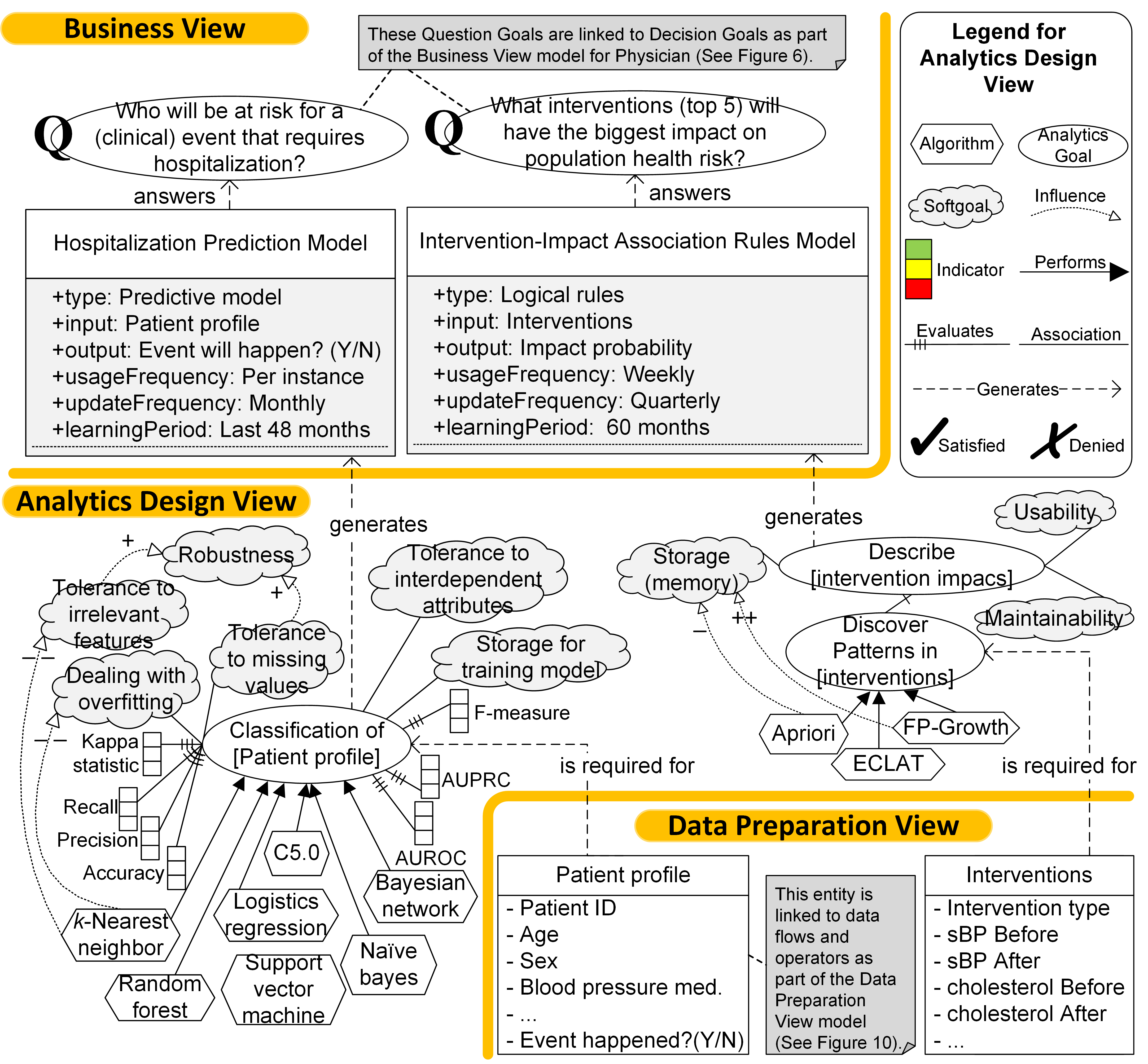Objectives of the Analytics Design View
Understanding the elements of the Analytics Design View Model
| Type of Element | Description |
|---|---|
| Analytics Goals | Analytics Goals capture the intention of the analysis to be performed over the datasets. Three types of Analytics Goals are distinguished. The type of Analytics Goal can be derived from the type of Insight that is required to generate (from the Business View). Each Analytics Goal is then connected to its corresponding Insight element via the generates link. |
| Algorithms | Algorithms are procedures and calculation steps that are needed to fulfill an Analytics Goal. They are connected to Analytics Goals through the performs link, showing a means-end relationship. |
| Softgoals | Softgoals represent quality requirements to be taken into account during design of the machine learning solution. |
| Influences | Influence Links show how the Softgoals are satisfied through operationalization and design decisions. This view is connected to the previous modeling view through the generates link. |
Analytics Goals are broken down into further types : Prediction Goal, Description Goal, and Prescription Goal. The table below breaks down these attributes.
| Type of Analytics Goal | Description |
|---|---|
| Prediction Goal | If the analytics aims to predict the value of a data attribute (i.e., a variable or data column), it is called a Prediction Goal. |
| Description Goal | If the analytics aims to summarize and explain the dataset, it is called a Description Goal. |
| Prescription Goal | If the analytics aims to find the optimal alternative given a set of options and criteria, it is called a Prescription Goal. |
Constructing the Analytics Design View Model
Step 1: Specify the top level Analytics Goals that the system would achieve
Step 2: Decompose Analytics Goals
Step 3: Model a set of Algorithms that can fulfill your top-level Analytics Goals
Step 4: Model the criteria for making design decisions and algorithm selection in terms of Softgoals and Indicators
Step 5: Model the Influence Links from Algorithms to Softgoals
Step 6: Model the Influence Links from Algorithms to Indicators
Example of Analytics Design View Modelling in Practice
Below is an example illustrating the connection between an Analytics Design View Model and the Business and Data Preparation Views. The middle-part shows parts of the Analytics Design View developed in this example along with links to the Business View (top-part) and Data Preparation View (bottom-part).
